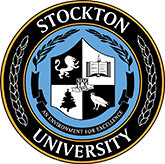Simulated Emergency On-Campus Prepares Nursing Students
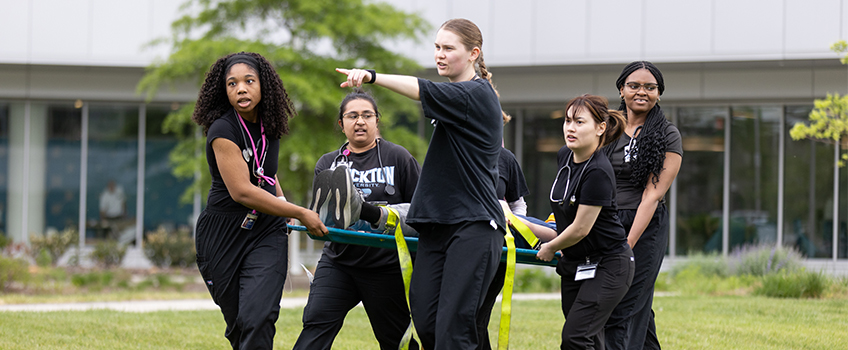
Graduating Nursing students participated in a simulated mass casualty drill on Saturday, May 3.
Galloway, N.J. – Shrill screams from the Unified Science Center (USC) pierced the quiet calm of a recent Saturday afternoon on Stockton University’s campus.
Students and community members covered in dark red and brown face paint soon poured out of the building, some shouting “Help!” while others held their faces and bodies in feigned agony.
Soon, students of Stockton’s Nursing program were on the scene, brandishing first-aid kits and triage tags as the campus’ second-annual Mass Casualty Drill got underway on Saturday, May 3.
The students’ calm replaced the noise of chaos as they soothed and treated their patients. “Can you see me? Can you hear me? Let’s move to a quieter spot.”
Low-priority patients were gathered into categories ranging from “good” to “slightly injured” on the quad, while high-priority patients were led to a “decontamination station” on the other side of the USC or transported via stretcher to the “emergency room” in the John F. Scarpa Health Sciences Center’s simulation labs modeled after real clinical/examination rooms.
According to Simulation Coordinator Ken Davis, this specific experience was designed to expose Nursing students, who are usually interested in and hired into various fields such as med-surg and pediatrics, to emergencies “in the field,” fostering mutual respect and understanding between service providers.
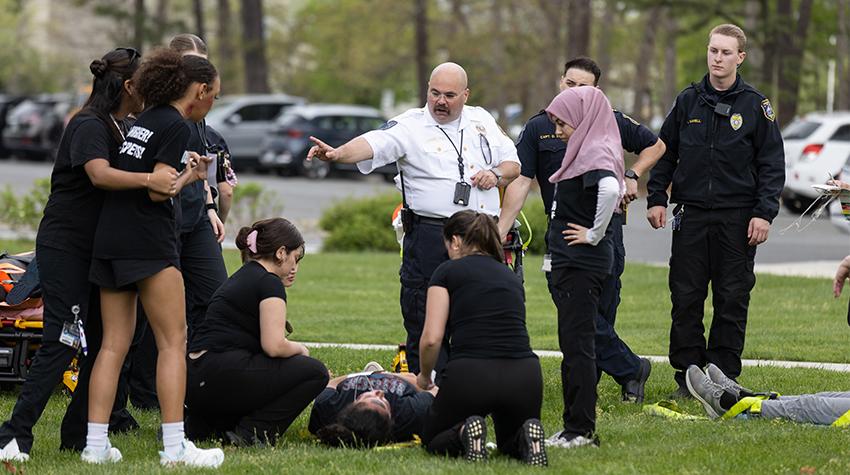

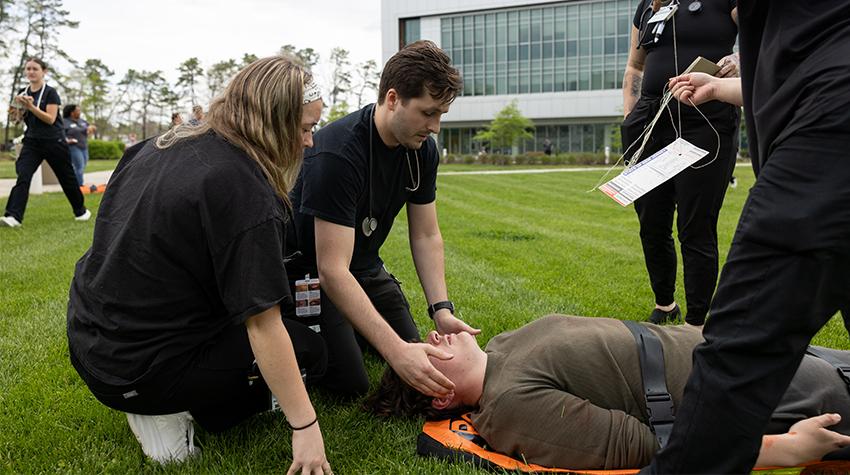
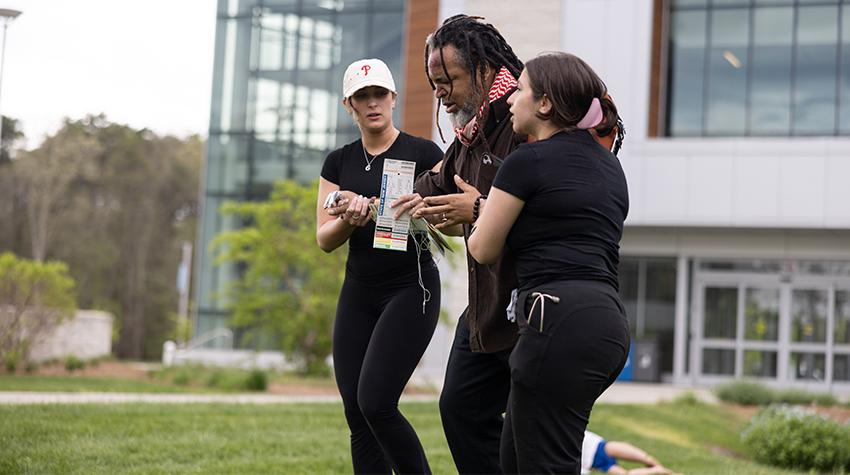
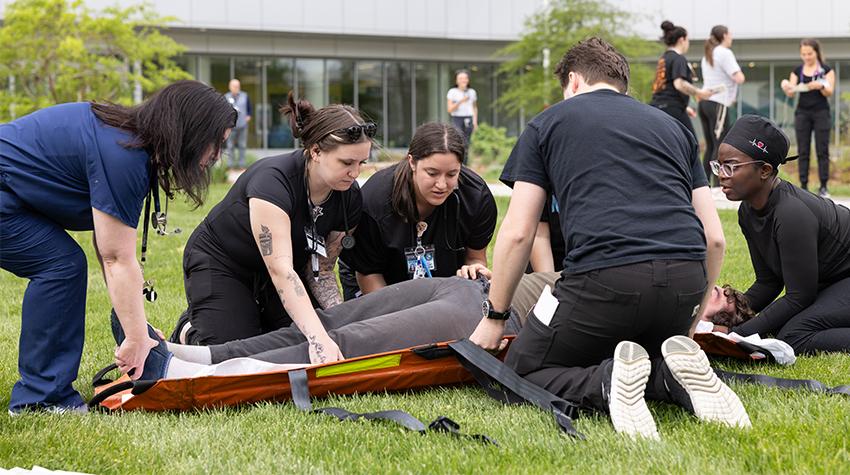
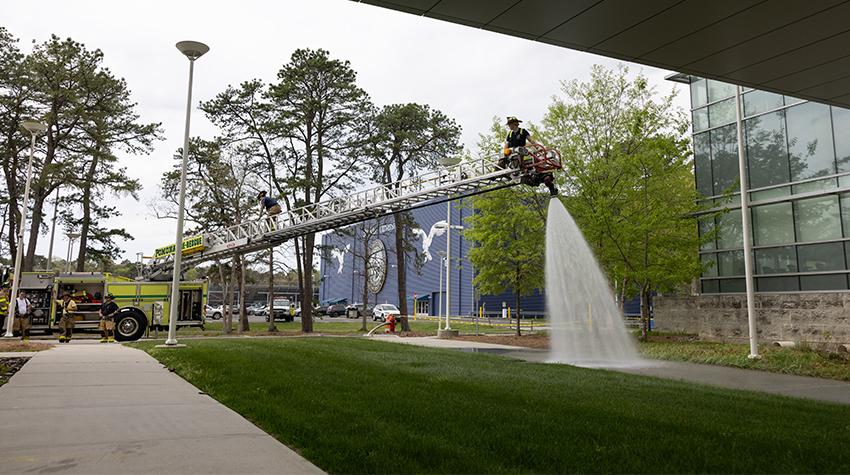
“Health care providers don’t typically see the car entrapments or the explosions. They just see the patients packaged and bandaged, taking them from there. This exposes them to what they don’t see outside of the walls (of the ER) during the platinum 10,” Davis said, referencing the first 10 minutes following an incident or injury.
The exercise also demonstrated how much of a collaborative effort emergency situations can become. In addition to the Stockton Nursing faculty, individuals from Galloway EMS and the Galloway Township Fire Department provided guidance and instructed students on proper equipment usage.
They allowed the students to practice with equipment and tools, such as stretchers and neck collars, and the fire department allowed them to tour their mobile decontamination shower fashioned out of a gutted fire truck.
“In a real emergency, it’s never just one agency or individual. We all have to work as a team,” said Albert Handy, Stockton’s associate director of Facilities Management and Plant Operations.
Ken and Connor McHale, twin brothers from Beachwood in the Nursing program’s accelerated track, said the exercise, while at times hectic, provided them with a foundation of knowledge that will prove useful in their future careers in emergency medicine.
“It was almost like a quick run-down of everything we’ve learned so far: assessing a patient extremely quickly and how to treat someone or prepare them to be sent off for more treatment and imaging,” Ken said. “It was a little crazy sometimes with so many people coming in at once, but teamwork helped.”
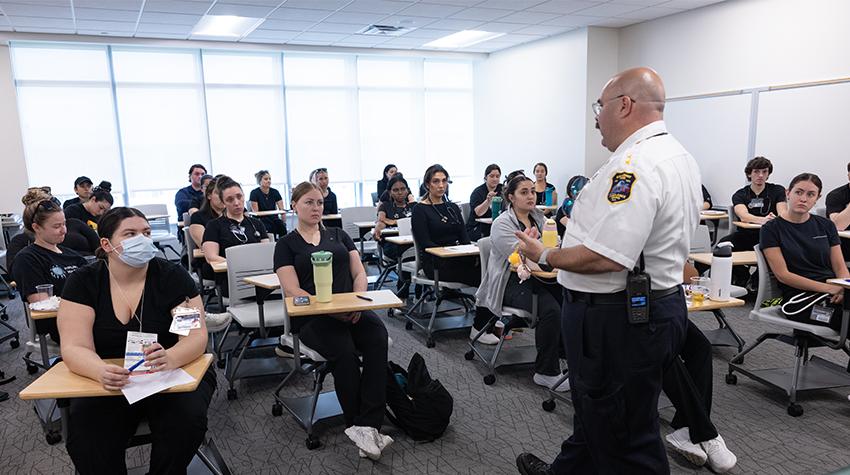
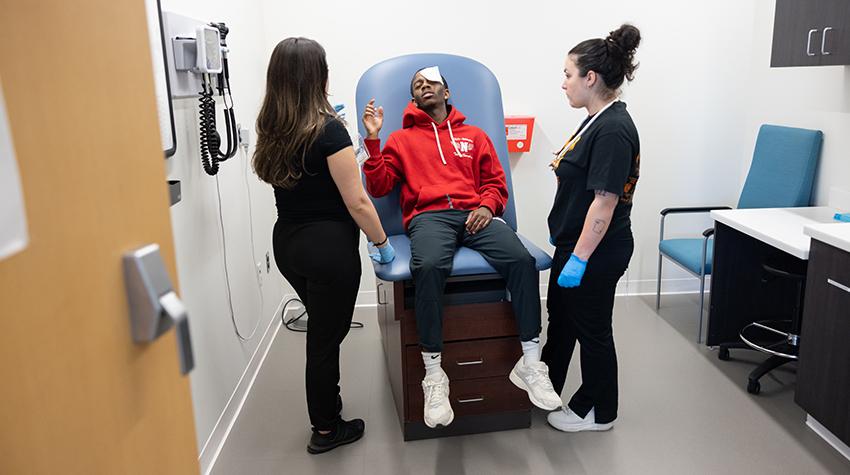
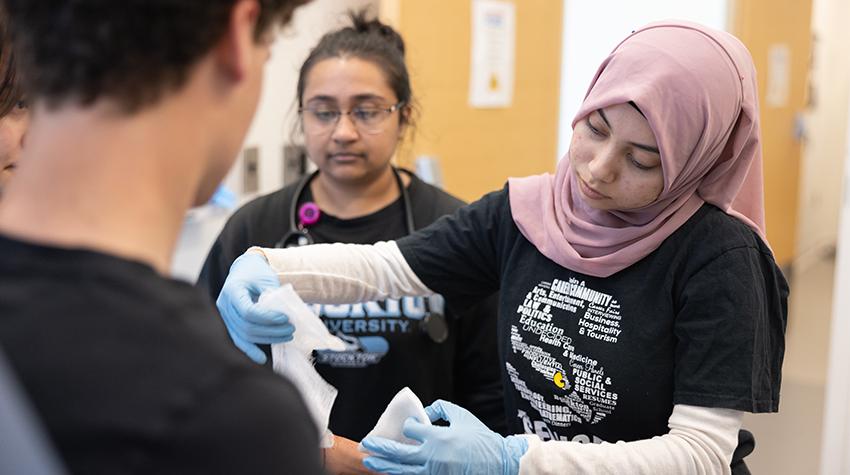
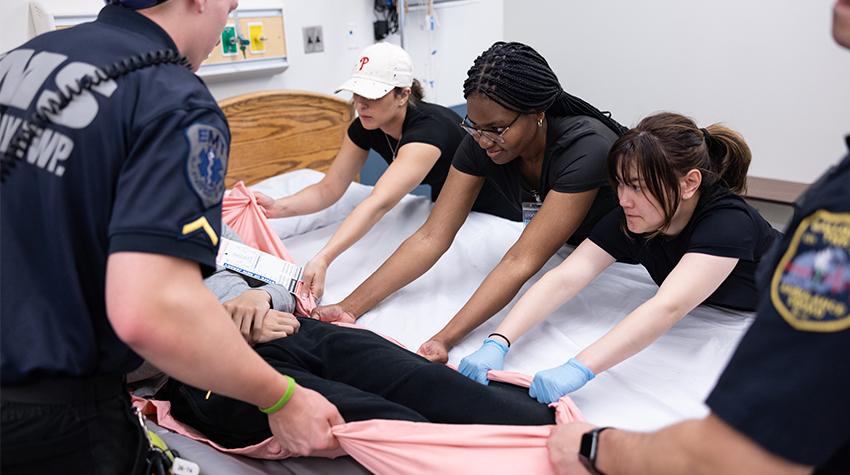
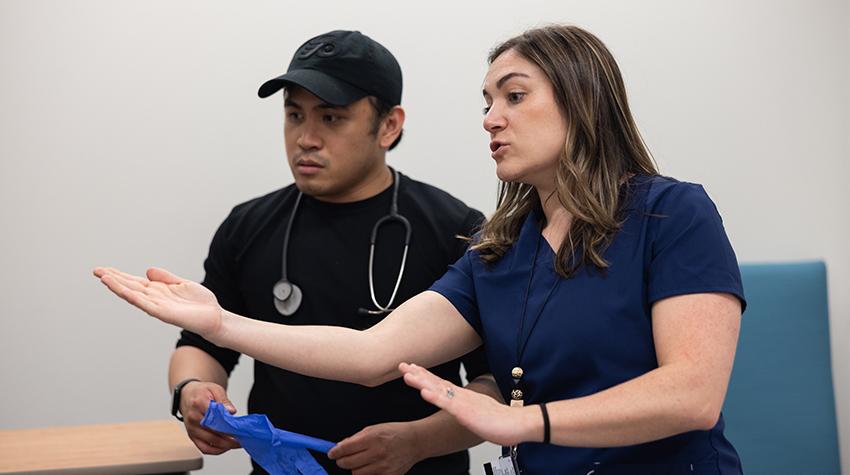
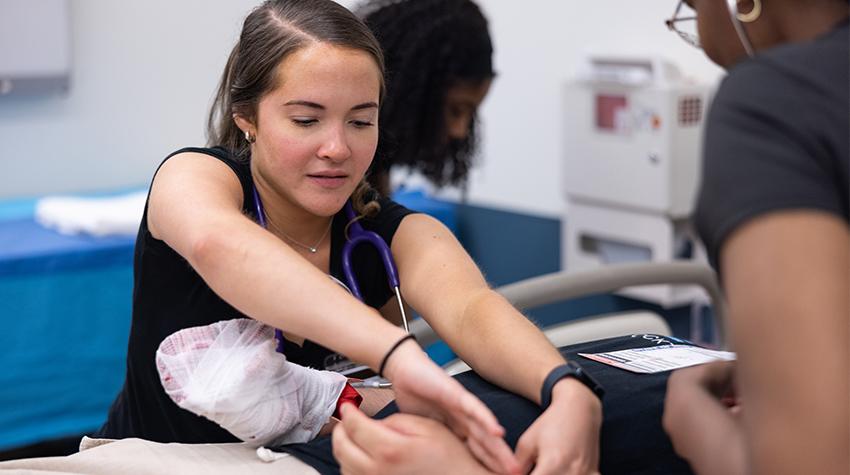
“I was downstairs, triaging patients as they showed up, and it was quick and easy – ambulatory patients were led to the ER, and we got wheelchairs for those who couldn’t walk, like a pregnant lady and a man who fainted as soon as he came in. There was a lot of communication between us,” Connor said.
Karina Rojas, who is in the same program as the McHale brothers, has worked as an emergency room technician at AtlantiCare for the last four years. She said the exercise made her feel like she was “reliving those moments (she) had at work,” and ultimately feels that it was beneficial for her and her peers.
“Even though some of my classmates may not end up in an emergency setting, there will be that day when they may have to come to the emergency department to help,” Rojas said. “Those nursing and basic assessment skills don’t go away, so I feel like this drill really gave us a taste of the real world and how these basic skills will help us go a long way.”
This message of cross-training was emphasized during the day's debriefing with Nursing faculty members and Galloway EMS Chief Chuck Uhl, who occasionally guest lectures within the program.
Uhl informed them that EMS teams like his typically conduct training like Saturday’s exercise annually and emphasized that the healthcare system is constantly changing, requiring students to always seek out new learning opportunities.
“This is the end of your formal, didactic nursing education, but this is not the end of your education – it’s only the beginning,” Uhl said.
– Story by Loukaia Taylor
– Photos by Susan Allen
Simulation Suites
The Stockton University Simulation Center uses health care simulation as an instructional methodology to promote learning in a clinically safe environment. Formative and summative assessment occurs under the mentorship of faculty.
The 3,500 square foot simulation center incorporates computerized human mannequins and live patient actors to promote a lifelike clinical experience. The center includes a:
- medical / surgical patient suite
- labor and delivery suite
- intensive care suite
- exam rooms
- pre- and post-conference rooms
- and a 40-seat simulation Anatomage Classroom
Anatomage is a 3D medical interactive table allowing for human anatomy examination, education, patient diagnosis, and dynamic presentations.
